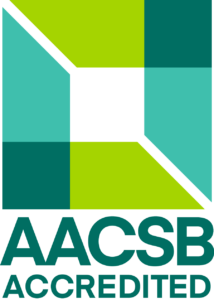Indirect taxes
- Credits: 6
- Ending: Examination
- Range: 2P + 2C
- Semester: winter
- Year: 1
- Faculty of Economics and Finance
Teachers
Included in study programs
Teaching results
The aim of the course is:
• to obtain advanced, comprehensive and systematic knowledge about both substantive and
procedural aspects of VAT placing an emphasis on theoretical knowledge and practical skills
• to demonstrate knowledge of legal standards governing the area of VAT and understand the
harmonization processes in the field of consumption taxation and their impact on the creation of
national tax legislation
• to prove professional skills in the field of VAT and the ability to solve theoretical and practical
problems independently and to adopt efficient tax solutions
After completing the course, students should obtain:
1. Knowledge and understanding:
• to understand the basic principle of functioning of VAT mechanism in the territory of the
country as well as within the EU internal market and outside the EU
• to identify different types of taxable transactions, determine the place of taxation, tax liability
and the person liable to pay tax
• to assess the possibility and importance of VAT deduction
• to demonstrate knowledge of administrative duties related to VAT
• to use basic terminology in the field of VAT stylistically properly
2. Skills:
• an ability to perform the input VAT deduction analysis
• an ability to determine the tax base and calculate the amount of tax liability
• an ability to fill a VAT return and settle the relationship with the tax authority
3. Competences:
• an ability to search and analyse specialized information in the field of VAT from different
sources
• an ability to apply acquired knowledge and skills to solve problems in the field of VAT and
make efficient tax solutions
• an ability to work independently as well as part of a team
Indicative content
• To explain the functioning of the common VAT system in the European Union. Clarify
harmonization efforts in the field of VAT. Basic principles of the VAT mechanism within the
EU internal market and outside the EU. Identification of the territory in terms of the application
of the common VAT system.
• To characterize a taxable person and define the status of the taxpayer. To specify the issue of
registration obligations of domestic and foreign taxable persons. To assess the amount of
turnover for VAT registration.
• To assess different types of taxable transactions in relation to the territory of the country (e.g.
intra-Community transactions, trilateral trade, distance selling of goods, chain transactions,
import and export of goods, provision of domestic and cross-border services).
• To explain determination the place of taxable transaction in the supply of goods in relation to
the proper application of VAT.
• To explain determination the place of taxable transaction in the supply of services - the
application of the basic rule and specific rules depending on the status of the recipient of the
service.
• To assess the incurrence of tax liability on the supply of goods or services.
• To identify a person liable to pay VAT. To explain the application of the reverse charge
mechanism.
• To assess the origin and conditions for the right of VAT deduction.
• To point out the possibilities of VAT refund.
• To specify the applications of the special schemes for VAT. To point out the possibility of
applying the extended system of a single point of contact (OSS - One Stop Shop).
• To define the administrative responsibilities of persons liable to pay VAT.
• To outline the current VAT issues in the national and international context.
Support literature
1. Legislative standards in the field of VAT
2. Methodical guidelines of the Financial Directorate of the Slovak Republic in the field of VAT
3. VÁLEK, J. a kol.: Daňovníctvo. 2. vydanie. Bratislava: Wolters Kluwer, 2023, ISBN 978-80-7676-736-2
4. KUŠNÍROVÁ, J. – RABATINOVÁ, M. – VÁLEK, J.: Daňová politika a jej vplyv na efektívny výber daní a elimináciu daňových únikov; Wolters Kluwer, Praha 2017; ISBN 978-80-7552-900-8
Requirements to complete the course
2 continuous written work, final written exam
Assessment of students includes:
15 % continuous written work I.; 25 % continuous written work II.; 60 % final written exam
Student workload
156 hours
participation in lectures 26 hours, participation in seminars 26 hours, preparation for lectures 10
hours, preparation for seminars 13 hours, preparation for continuous written work I. 15 hours,
preparation for continuous written work II. 20 hours, preparation for final exam 46 hours
Language whose command is required to complete the course
slovak
Date of approval: 11.03.2024
Date of the latest change: 14.09.2023

